Introduction: Why Sock Selection Matters for Steel Toe Boots
When it comes to work boots, most people immediately think of durability, protection, and comfort. But what about the often-overlooked element: the socks? The right pair of socks can make all the difference between a long day of aching feet and all-day comfort. For those wearing steel-toe boots, the wrong socks can lead to blisters, discomfort, and even long-term foot health issues. For retailers and brands, offering high-quality socks that complement steel-toe boots isn’t just a nice-to-have—it’s a must. It’s more than simply providing a product; it’s about offering a solution to your customers’ everyday challenges.
If your business is looking to stand out in the crowded workwear market, understanding the crucial role that sock selection plays is essential. In this guide, we’ll explore why sock quality matters and how the right pair can enhance comfort, performance, and customer loyalty—ultimately elevating your brand’s reputation.
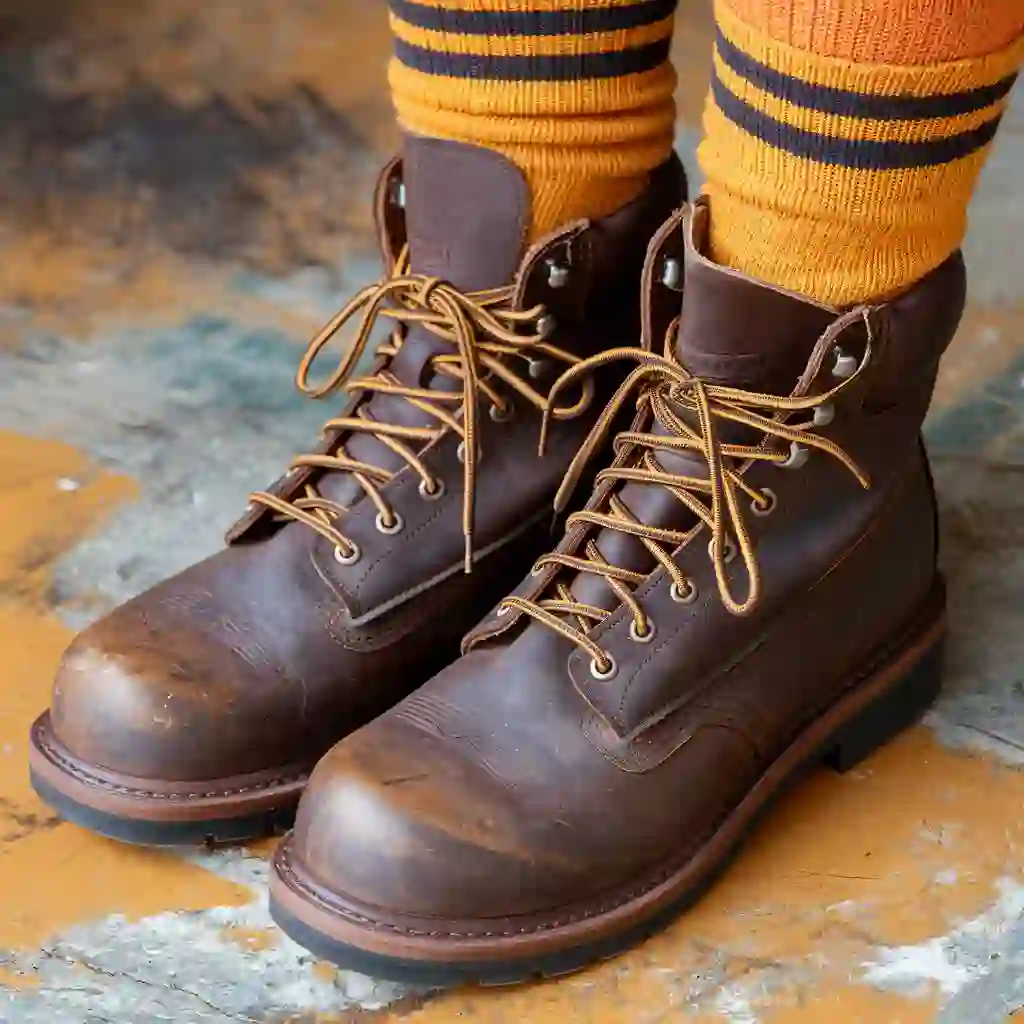
Common Foot Problems from Wearing Steel-Toe Work Boots and How the Right Socks Help
How to Prevent Blisters When Wearing Steel Toe Boot Socks
Blisters are one of the most common problems for workers who spend long hours in steel-toe boots. Friction between the boot and the skin causes irritation, often resulting in painful blisters. The right socks, especially those with seamless construction and moisture-wicking properties, can significantly reduce friction. By providing a smooth, cushioned layer between the skin and the boot, these socks minimize hot spots, which are the precursors to blisters, ensuring a more comfortable fit.
Best Socks to Reduce Foot Fatigue for Steel Toe Boots and Long Work Hours
Wearing boots for extended hours can lead to aching feet and fatigue. Properly designed socks with cushioning, compression, and arch support help alleviate the strain caused by hours of standing or walking. These features promote better circulation and reduce foot stress, making it easier to stay comfortable and focused during long shifts.
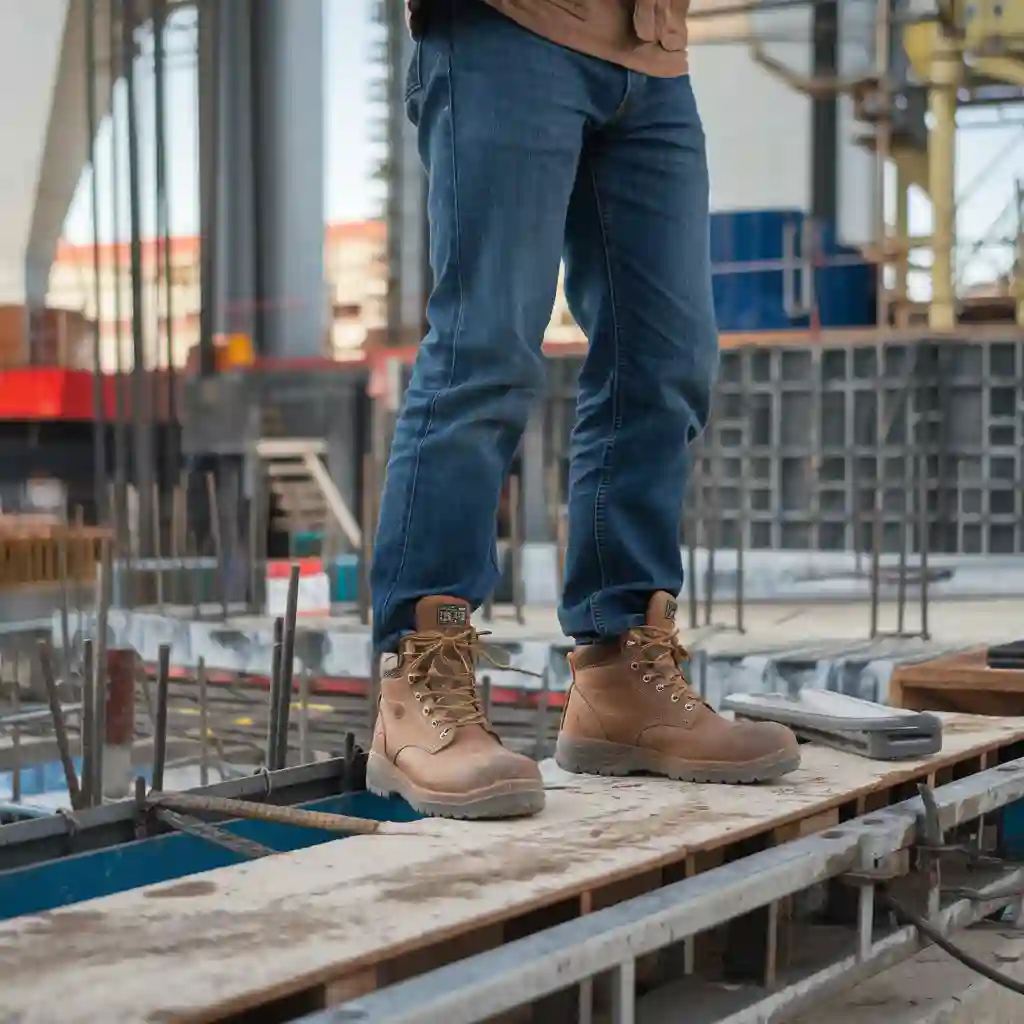
Preventing Moisture Build-Up and Odor
Moisture trapped inside boots can lead to unpleasant odors and foot problems, such as fungal infections. Socks crafted with moisture-wicking materials actively pull sweat away from the skin, keeping feet dry and fresh. Additionally, socks that incorporate antimicrobial properties help prevent bacteria buildup, ensuring feet remain odor-free and healthy throughout the day.
Best Socks for Cold and Wet Conditions in Steel Toe Work Boots
In extreme weather conditions, workers need protection against the cold or wetness. Some socks are specifically designed with insulation properties, such as merino wool, to keep feet warm and dry. These socks provide extra defense against external elements, ensuring that feet stay comfortable and shielded from harsh environments, whether it’s snow, rain, or cold floors.
Important Features to Look for in Steel Toe Boot Socks for All-Day Comfort and Protection
Moisture-Wicking Properties: Keep Feet Dry in Steel Toe Work Boots
Feet trapped in heavy-duty boots can quickly become a breeding ground for moisture, leading to blisters, foul odors, and fungal infections. That’s why moisture-wicking fabrics are essential. Materials like merino wool, spandex blends, or specialized synthetics pull moisture away from the skin, ensuring feet stay dry and comfortable for longer. Keeping feet dry is critical to avoiding irritation and promoting overall comfort during long shifts.
Seamless Sock Construction: Reduce Friction in Steel Toe Boots
Seams might seem like a minor detail, but they can make a world of difference when it comes to comfort. Thick or poorly constructed seams can rub against the skin, leading to painful abrasions and irritation after hours of wear. High-quality socks are designed with smooth, flat seams that minimize friction and eliminate discomfort, making them ideal for tough work environments where comfort is a top priority.
How Proper Sock Sizing Impacts Fit and Comfort in Steel Toe Boots
A sock that’s too big or too small can lead to constant adjustments or slipping inside the boot. Proper fit is crucial to prevent bunching, sliding, or tightness. When socks are the right size, they provide a secure fit around the arch and ankle, keeping the foot stable throughout the day. Choosing the right size ensures that socks fit comfortably without causing restrictions or discomfort during long hours.
Anatomical Sock Fit: Better Support for Long Hours in Steel Toe Boots
The shape of the sock plays a significant role in overall comfort. Socks that conform to the foot’s natural shape—particularly around the arch and heel—enhance stability, preventing slippage and reducing fatigue. Foot-shaped socks ensure that the sock stays in place, enhancing comfort and support throughout the day. This fit is especially important for those who spend extended periods standing or walking in steel-toed footwear.
Choosing the Right Sock Length
When it comes to length, the wrong choice can affect both comfort and protection. Ankle socks may leave the foot vulnerable to debris or irritation from the boot, while over-the-knee socks can be impractical. Mid-tube socks offer the ideal balance, covering just above the boot’s shaft and preventing debris from entering. This length provides flexibility, allowing the sock to be worn pulled up or folded down based on personal preference.
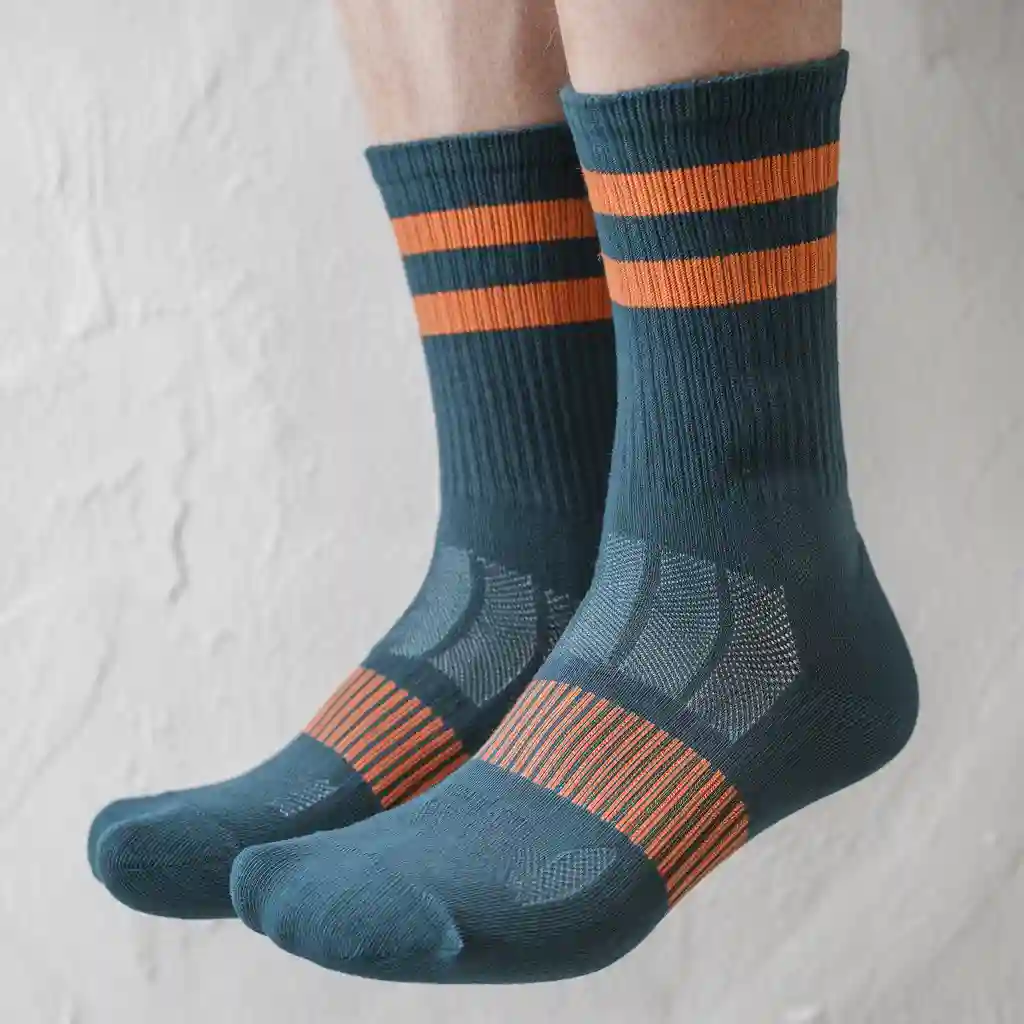
Reinforced Toe Areas: Extra Protection for Steel Toe Boot Wearers
Steel toe boots provide essential protection, but they can also put pressure on the toes, causing discomfort over time. Extra cushioning in the toe area helps to alleviate this pressure, offering a layer of protection against hard steel edges. By choosing socks with additional padding around the toes, you can enhance comfort and reduce the risk of pain or bruising, ensuring that workers can stay on their feet longer without discomfort.
Durable Socks for Steel Toe Boots: Long-Lasting Performance That Matters
A sock that wears out after just a few uses is not only uncomfortable but also inefficient for work environments. Durable socks should retain their shape and structure after long hours of use and multiple washes. Reinforced areas, especially around the heel and toe, ensure socks can withstand constant movement and tough conditions without sagging or bunching up. Durability is key for socks that perform over time in demanding environments.
Breathability and Odor Resistance
Long work shifts in steel-toe footwear can lead to excessive sweating and unpleasant foot odors. Breathable socks made from materials like merino wool, bamboo, or high-performance synthetics allow air circulation to keep feet cool and dry. Additionally, odor-resistant fabrics help minimize the growth of bacteria that cause foot odor, ensuring workers stay fresh and comfortable even after long hours.
Best Materials for Steel Toe Boot Socks: Comfort, Durability, and Sweat Control
Cotton vs. Synthetic Materials
Cotton is often favored for its softness and comfort but tends to absorb moisture, leaving feet damp in demanding conditions. While breathable, cotton socks may cause irritation when worn for extended periods in heavy-duty footwear. In contrast, synthetic materials like nylon, polyester, and spandex excel in moisture-wicking, durability, and providing a snug fit. Although not as soft as cotton, these materials offer greater long-term performance and help keep feet dry.
Wool and Its Benefits for Insulation and Moisture Control
Merino wool stands out as an excellent choice for insulation and moisture regulation. It works well in both cold and warm environments, keeping feet dry by wicking moisture away from the skin. Wool naturally resists odors, which is particularly useful for workers who spend long hours on their feet. Its insulating properties also help maintain comfort in extreme temperatures, making it ideal for work boots that require both warmth and dryness.

Blended Fabrics for Optimal Comfort and Durability
Blended materials combine the strengths of natural and synthetic fibers, delivering the ideal balance of comfort, moisture-wicking, and durability. For example, a wool-synthetic mix offers the warmth and moisture control of wool, while adding the durability and stretch of synthetic fibers. These blends help prevent shrinkage, maintain shape, and extend the lifespan of socks—crucial for the tough demands of long workdays in boots.
Eco-Friendly Materials: Why Sustainability Matters
In a world where environmental impact matters, eco-friendly options like organic cotton, bamboo, and recycled polyester are gaining popularity. These sustainable materials offer the performance needed for tough jobs while reducing the carbon footprint of manufacturing. Brands looking to align with consumer demand for greener products can benefit from offering socks made from these renewable resources, demonstrating their commitment to both quality and sustainability.
Sock Styles: Which Type Works Best for Steel Toe Boots?
Crew Socks vs. Knee-High Options
Crew socks are a common choice for steel-toe footwear, offering a good balance of comfort and protection. They typically sit just above the ankle, providing cushioning without added bulk. Knee-high alternatives, however, are ideal for individuals needing more extensive coverage, especially in rugged environments. Their longer length prevents discomfort from boot edges and protects the skin from debris.
Compression Socks: When to Use Them
Compression designs help to improve circulation and alleviate fatigue, especially during long shifts. These socks apply targeted pressure to the legs and feet, reducing swelling and enhancing overall comfort. They are especially beneficial for workers on their feet all day, supporting their well-being and reducing the risk of circulatory issues.
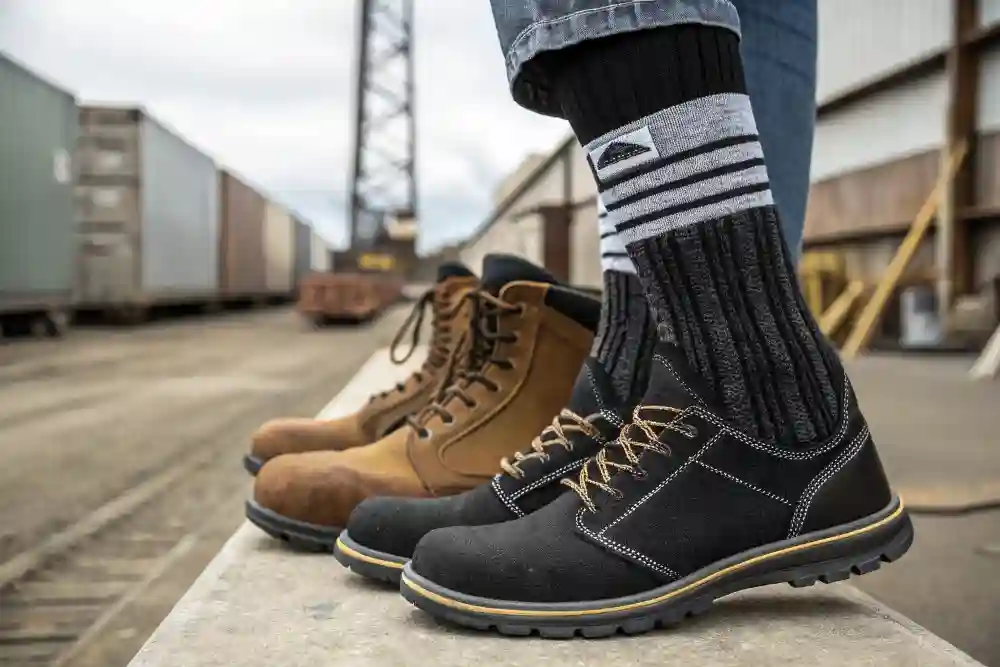
Reinforced Heel and Toe for Durability
Steel-capped boots can wear down socks quickly, especially around high-impact areas like the heel and toe. Reinforced designs strengthen these areas, extending the life of the socks and ensuring they stand up to the rigors of daily work. With extra durability in these spots, workers experience less wear-and-tear and fewer replacements.
Cushioning Options: Full vs. Half vs. No Cushion
The choice of cushioning depends on the level of comfort and protection required. Full cushioning offers maximum comfort and shock absorption, making it ideal for those who stand or walk for extended periods. Half cushioning provides some support without the bulk, offering a balance between comfort and flexibility. For workers who need less padding but still require comfort, thin, non-cushioned socks are a great option, especially in warmer climates. Each cushioning type addresses different needs, so it’s important for brands to consider their target market when selecting sock styles.
Trends in Work Boot Socks: What Retailers Should Know for 2025 and Beyond
Sustainability as a Selling Point
Eco-conscious consumers are becoming increasingly influential, driving demand for socks made from recycled synthetics and environmentally friendly materials like organic cotton. Eco-certifications, such as OEKO-TEX or GOTS, are also gaining traction. Retailers looking to attract this growing demographic should focus on providing sustainable options that demonstrate their commitment to environmental responsibility.
The Growing Demand for Socks with Health Benefits
More workers are seeking socks that offer more than just comfort. Compression technology is one key feature gaining popularity. Designed to improve circulation and reduce fatigue, these specialized designs are not just for athletes—they’re becoming a must-have for people who spend long hours on their feet. Retailers should expect growing interest in this health-driven feature, which promises to improve worker performance and well-being.
Rising Expectations: Customizable Cushioning Levels for Different Industries
Workers’ needs vary widely depending on the industry, and socks are no exception. The demand for customizable cushioning is increasing, with some industries needing additional padding in certain areas like the heel and toe, while others prefer lighter cushioning for enhanced flexibility. Retailers should be prepared to meet this demand by offering socks with adjustable padding options to suit the specific needs of different work environments.
Conclusion
Choosing the right socks for steel toe boots is essential for both comfort and performance. From moisture-wicking fabrics and seamless designs to the right level of cushioning, every detail contributes to a better wearing experience. Retailers and brands should pay attention to the material, fit, and durability of socks to meet the needs of end customers, especially those who spend long hours in challenging environments.
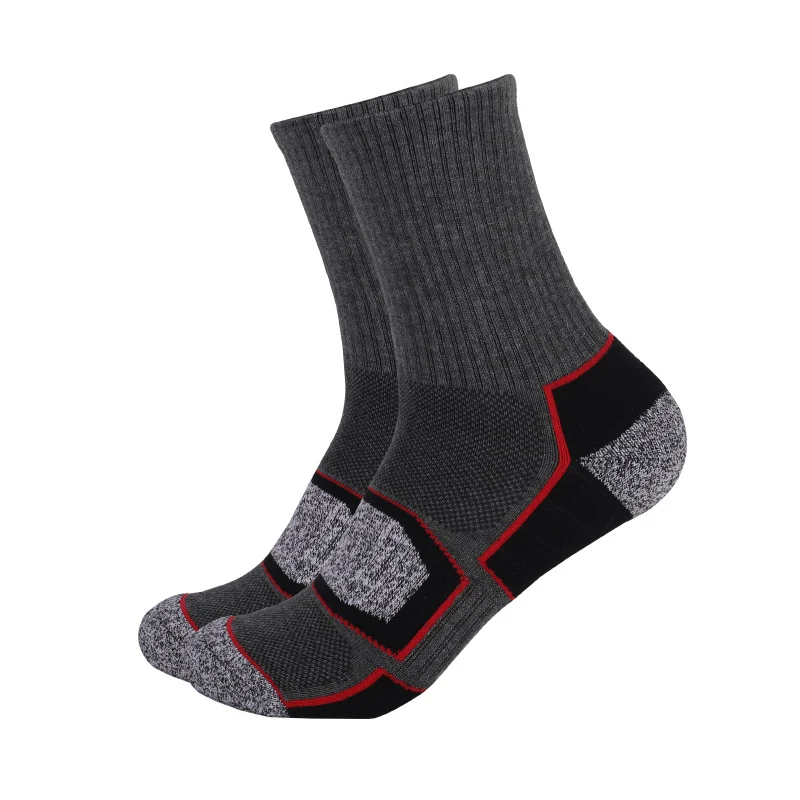
By selecting high-quality, well-designed socks that provide support, breathability, and protection, you can enhance your product offering and keep your customers satisfied. As trends evolve, sustainability and customization options are becoming increasingly important, offering new opportunities for differentiation.
If you’re looking to partner with a reliable manufacturer who understands the science of work socks, consider collaborating with an experienced factory that can deliver tailored solutions for your brand. Reach out today to explore custom sock options for steel toe boots that align with your brand’s values and meet your customers’ needs.
FAQs
Why are specialized socks important for steel toe boots?
Specialized socks for steel toe boots provide critical benefits like moisture-wicking, cushioning, and comfort to prevent foot fatigue, blisters, and discomfort during long shifts. They are designed to enhance the overall fit of the boot and protect against the pressure from steel toes.
What materials are best for socks worn with steel toe boots?
Wool, synthetic blends, and moisture-wicking fabrics such as nylon and spandex are ideal for steel toe boots. These materials keep feet dry, offer breathability, and provide durability, ensuring comfort during extended wear.
What sock length is recommended for steel toe boots?
Mid-tube socks, which reach the mid-calf, are ideal for steel toe boots as they provide optimal protection against debris, ensure breathability, and can be worn comfortably for long hours. Avoid ankle or low-cut socks as they don’t offer enough coverage or protection for work boots.
What are the most common foot issues that steel toe boot wearers face, and how do the right socks help?
Common issues include blisters, foot fatigue, and moisture build-up, all of which can be aggravated by ill-fitting socks. Choosing socks with moisture-wicking properties, cushioned insoles, and smooth seams can reduce friction, keep feet dry, and provide extra support, preventing these issues.
Can socks help improve foot health for people who wear steel toe boots all day?
Yes! Socks with compression features can promote better circulation, reducing swelling and foot fatigue. Additionally, socks with proper arch support and cushioning can help prevent long-term issues like plantar fasciitis or general foot pain from prolonged standing and walking.
